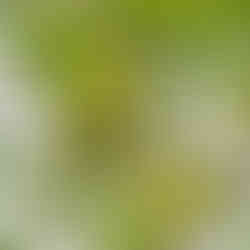Do we still have macaws in Espírito Santo?
- Leonardo Merçon

- Sep 11
- 3 min read
Photographing a macaw in the Atlantic Forest of Espírito Santo always fills me with pride — not only because of its beauty and exuberance, but also because these birds are a powerful symbol of biodiversity. Despite all the destruction, we still have representatives of this group living here.

The Blue-winged Macaw (Primolius maracana) still survives in the forests of Espírito Santo, although, sadly, the Red-and-green Macaw (Ara chloropterus) has been lost to human greed.
Macaws are iconic birds of Brazil, and in Espírito Santo, the so-called Blue-winged Macaw — a medium-sized macaw with predominantly green plumage — still resists. It is actually one of the smallest macaws in the world!

Yet, many people in the state don’t even know that we still have macaws in our forests. This saddens me — both because so many are unaware of our local biodiversity, and because of the painful reminder of the local extinction of the Red-and-green Macaw, a species that vanished quietly decades ago, driven by the illegal wildlife trade.
Mistaken for parrots
The Blue-winged Macaw is a small macaw with olive-green plumage, blue and reddish details on its wings and tail. Its discreet appearance often leads people to mistake it for parrots or parakeets, but it carries the unmistakable DNA of Brazil’s great macaws. They live in flocks, vocalize loudly, and are usually seen flying in pairs or small groups over the forest canopy.
Every time I spot a Blue-winged Macaw, it feels like finding hope again — a reminder that we can still conserve some of our most emblematic species.
A history of disappearance
Espírito Santo was once also home to the Red-and-green Macaw, but unfortunately it no longer survives here.

Historical accounts, such as those of German naturalist Prince Maximilian of Wied-Neuwied, who traveled through the region more than 200 years ago, describe forest landscapes along the Doce River so full of macaws that they looked like apple orchards — not covered with fruit, but with dozens of bright red macaws filling the trees with color and sound. Today, that scene seems like a distant dream.
According to a researcher I spoke with, the last Red-and-green Macaw from Espírito Santo died in captivity in the 1970s. The main cause of their disappearance? Poaching of chicks taken directly from nests to feed the illegal pet trade. An irreparable loss.
Understanding the differences: macaws, parrots, and parakeets
Many people confuse these three groups of birds, but there are clear differences:
Macaws (Examples: Blue-winged Macaw, Red-and-green Macaw) Large to medium size, long tails, bare facial skin.
Parrots (Examples: Turquoise-fronted Amazon, Red-browed Amazon) Medium size, short tails, feathered faces.
Parakeets (Examples: Golden Parakeet, Maroon-bellied Parakeet, Blue-winged Parrotlet) Small, long tails, feathered faces.
When beauty becomes merchandise
The illegal wildlife trade is one of the main causes of species extinction in Brazil. Macaws, with their striking colors and intelligence, are sadly among the top targets. For every macaw that ends up in a cage, dozens of chicks may be stolen from the wild.
That’s why, even though individuals of the Red-and-green Macaw or the Blue-and-yellow Macaw (Ara ararauna) are sometimes seen in Espírito Santo, these sightings usually refer to birds reintroduced by projects or escapees from captivity — not wild, natural populations.
A reminder
The Blue-winged Macaw may not have the bright colors of the Red-and-green Macaw, but it has its own importance. Its presence in the forests of Espírito Santo is both a gift and a warning — a reminder of the urgency to protect what remains.
Macaws are symbols of Brazilian biodiversity, often portrayed in films about the country. Espírito Santo has the privilege of still harboring them — but we have already lost our most colorful one.
Let’s protect the species that remain while there is still time. And remember to look up. That “parrot” flying overhead with a long tail might actually be a macaw — carrying with it an incredible story of survival.
If you’d like to keep following stories like this and many other experiences I’ve had in different regions of Brazil and around the world, follow me on social media: @leonardomercon | @ultimosrefugios. I’ll also be on vacation from the 10th to the 24th of this month. See you soon!

Nature photographer and cinematographer, founder of Instituto Últimos Refúgios, Master in Biodiversity Conservation and Sustainable Development, passionate about the environment! Join me on this incredible journey of wildlife discoveries and see more beautiful stories as I constantly explore nature.


















Comments